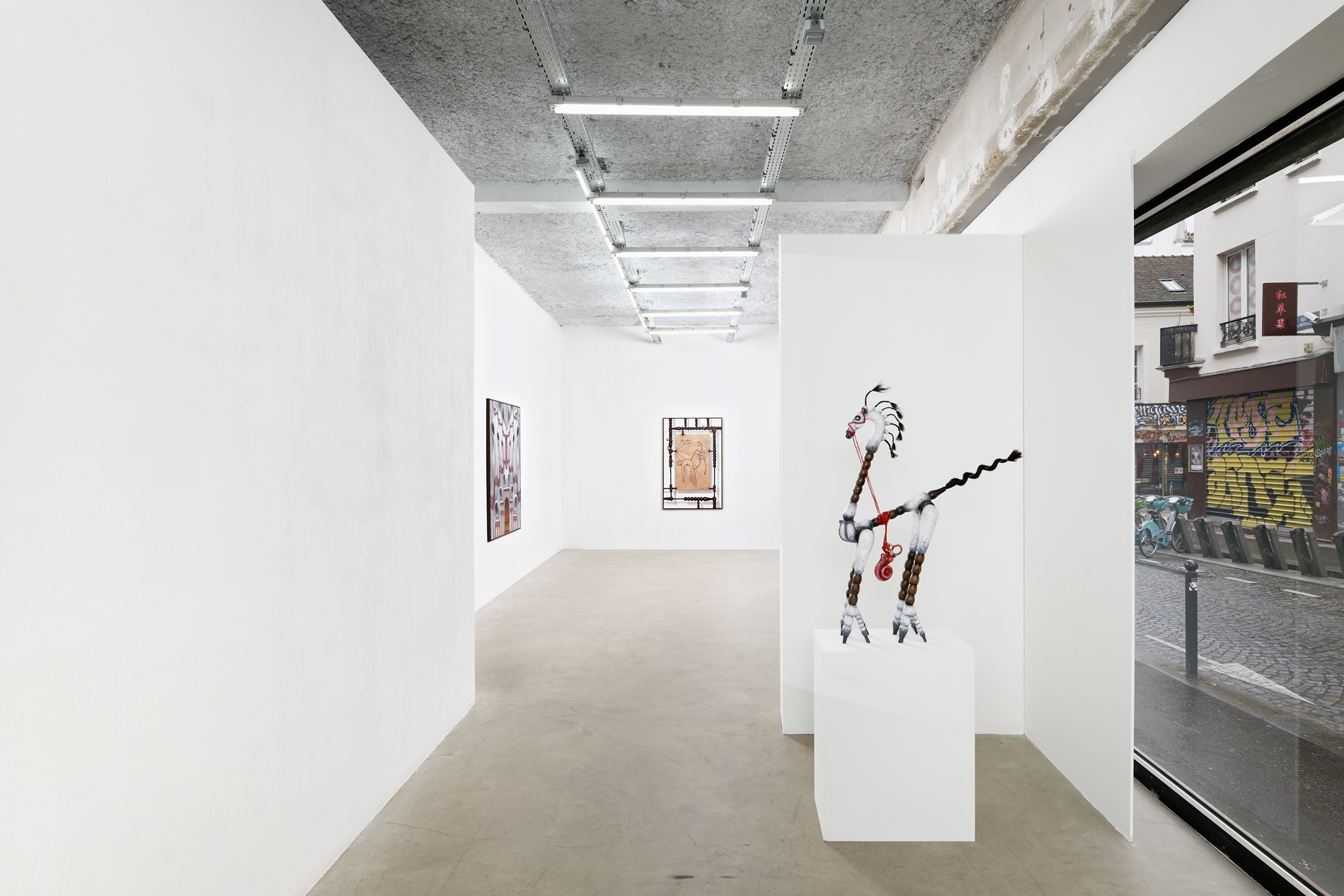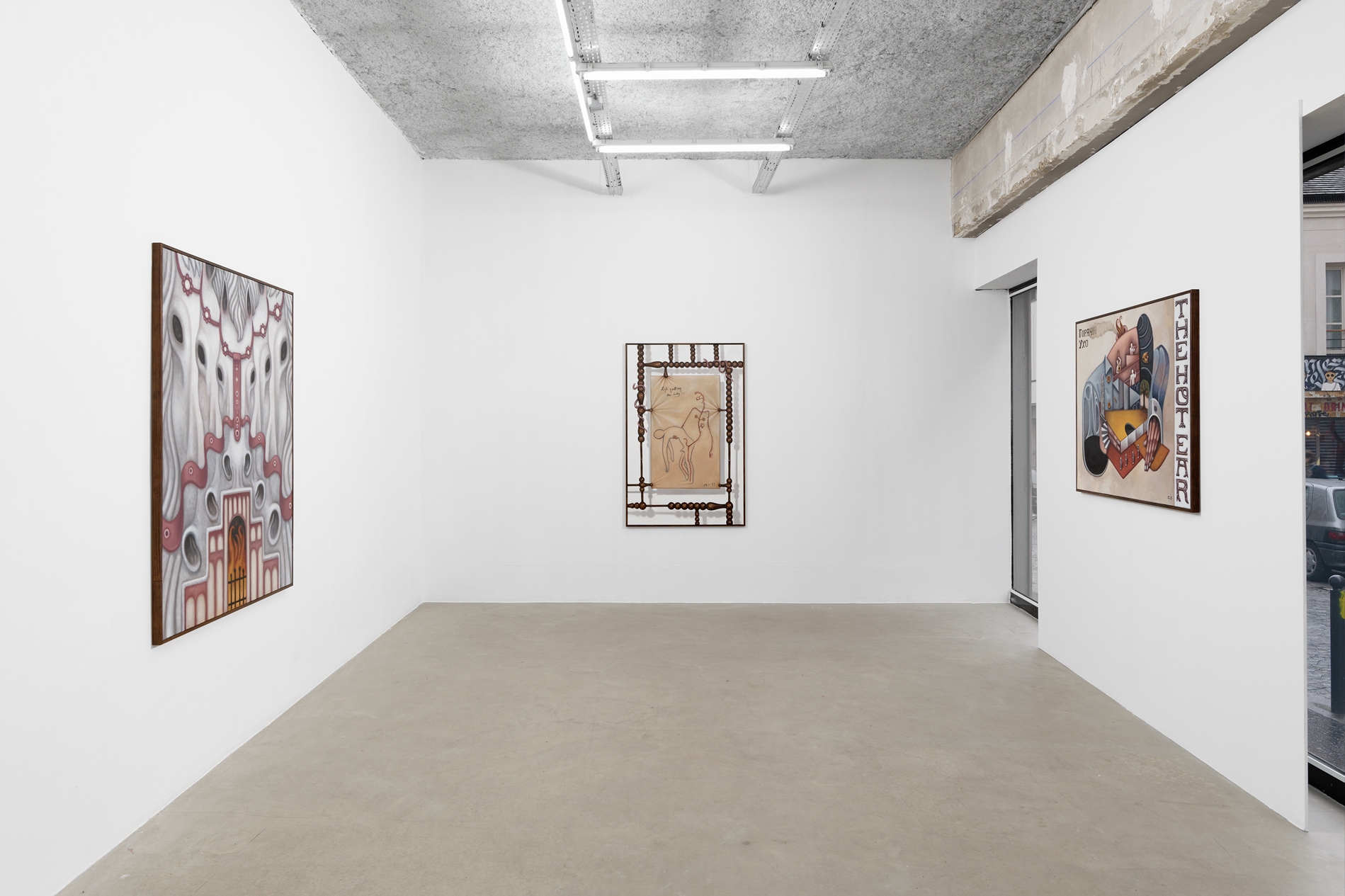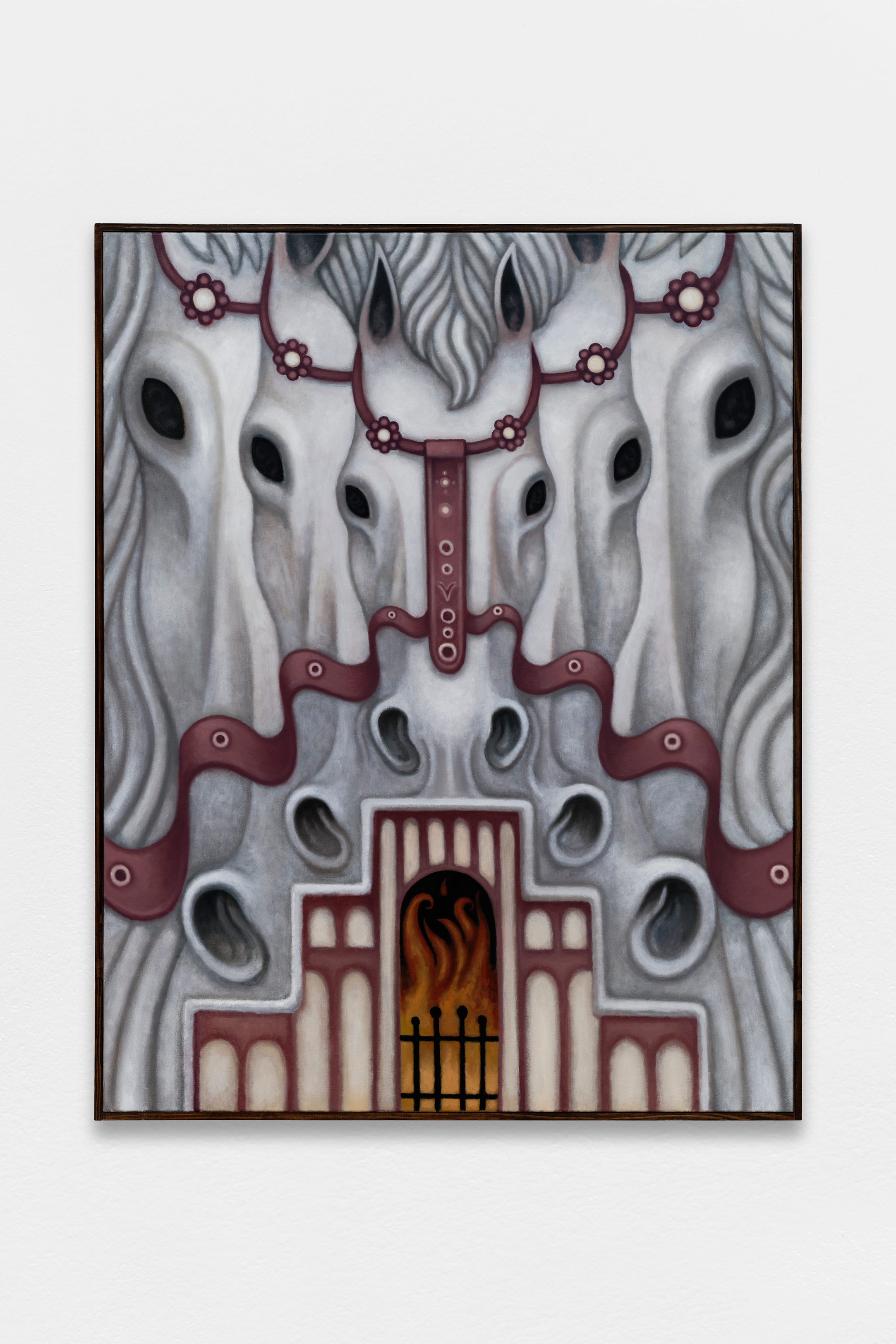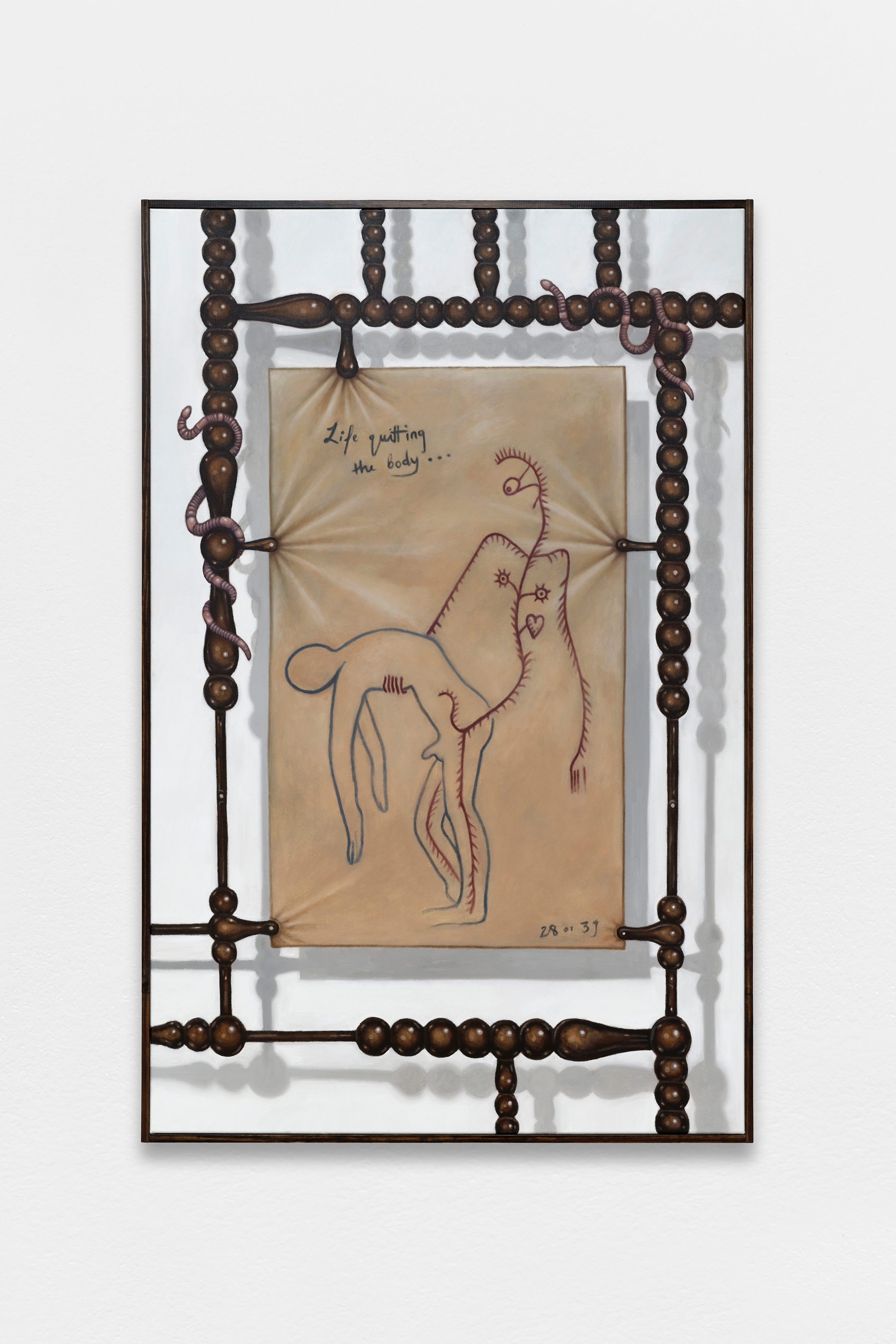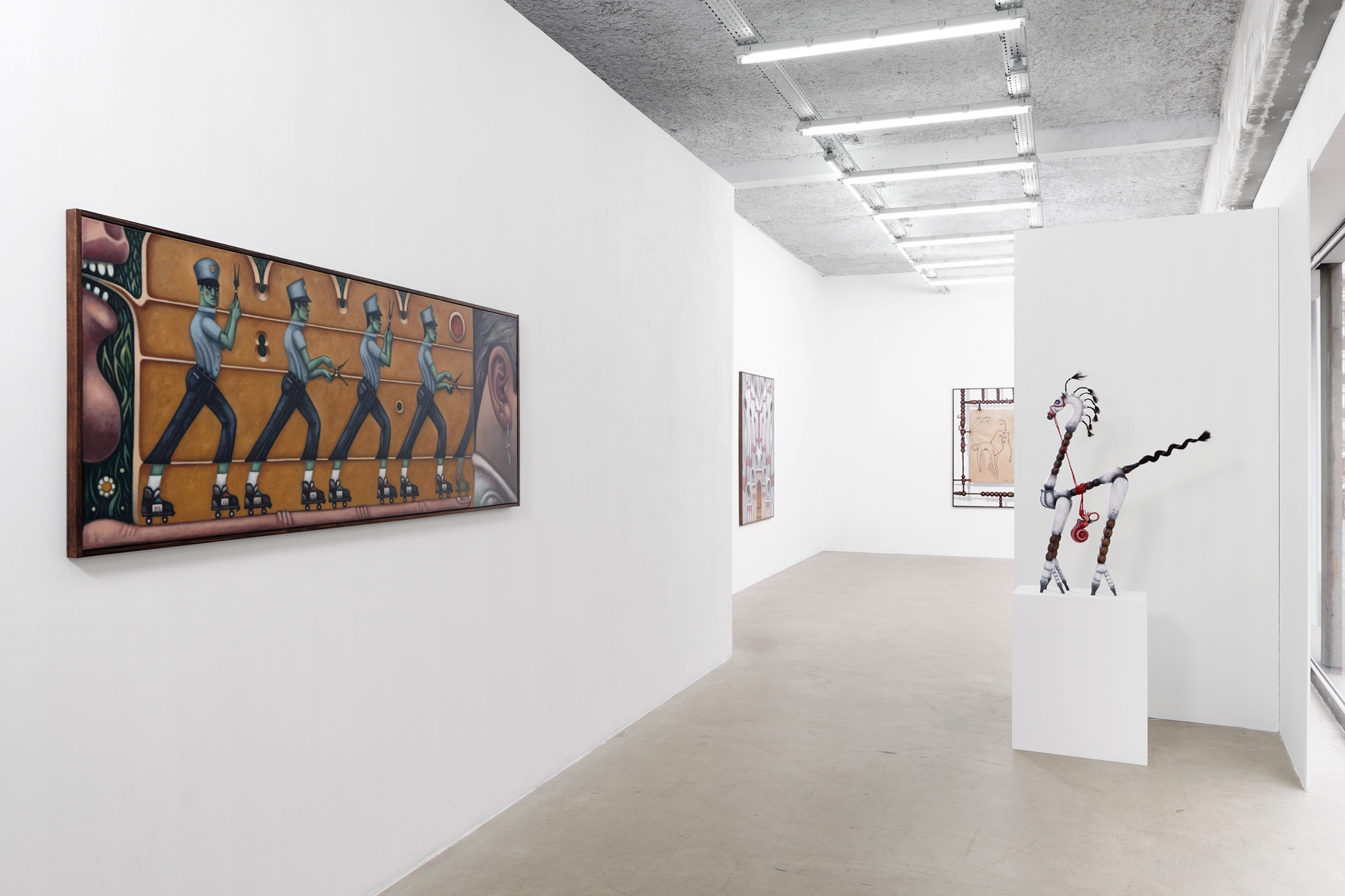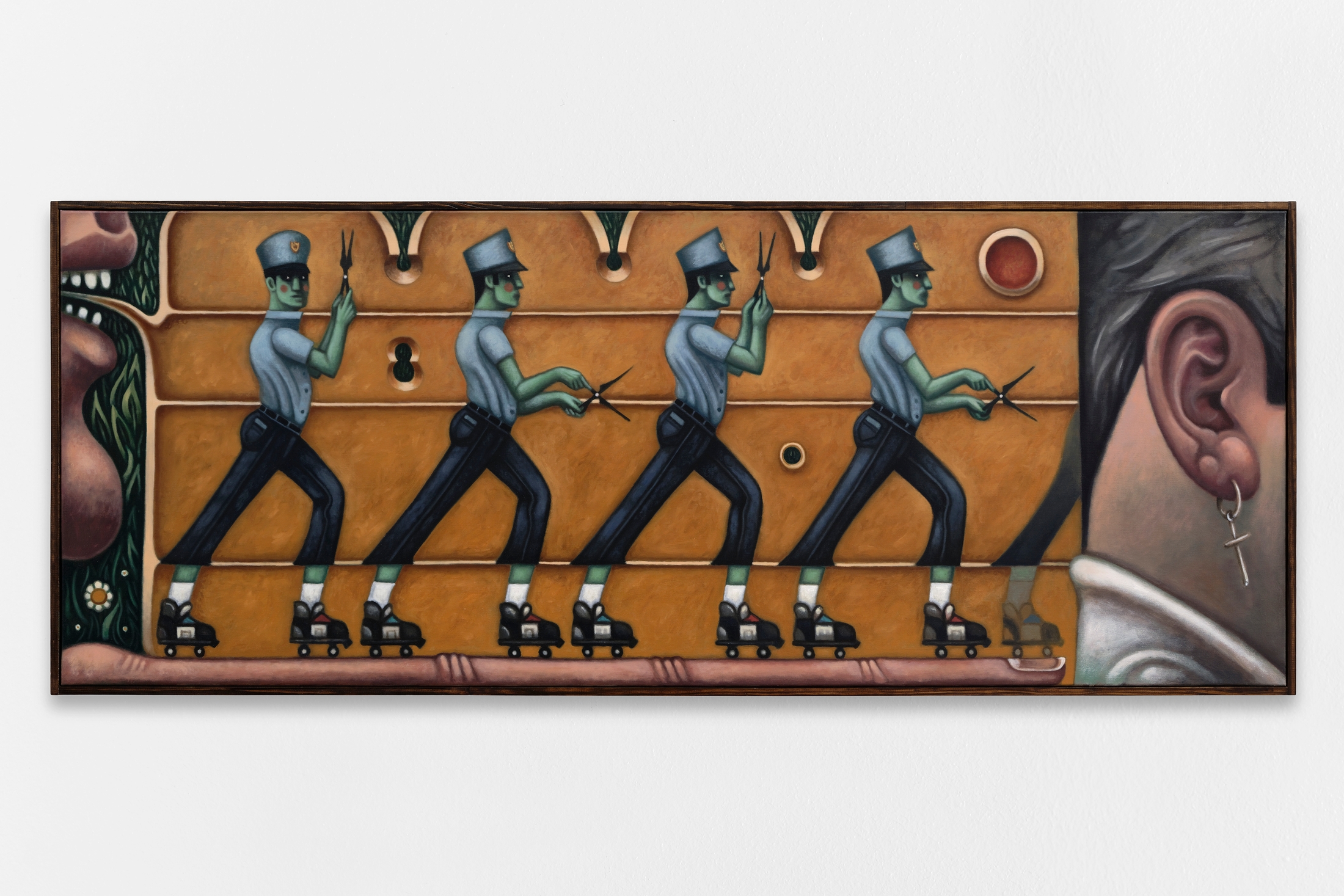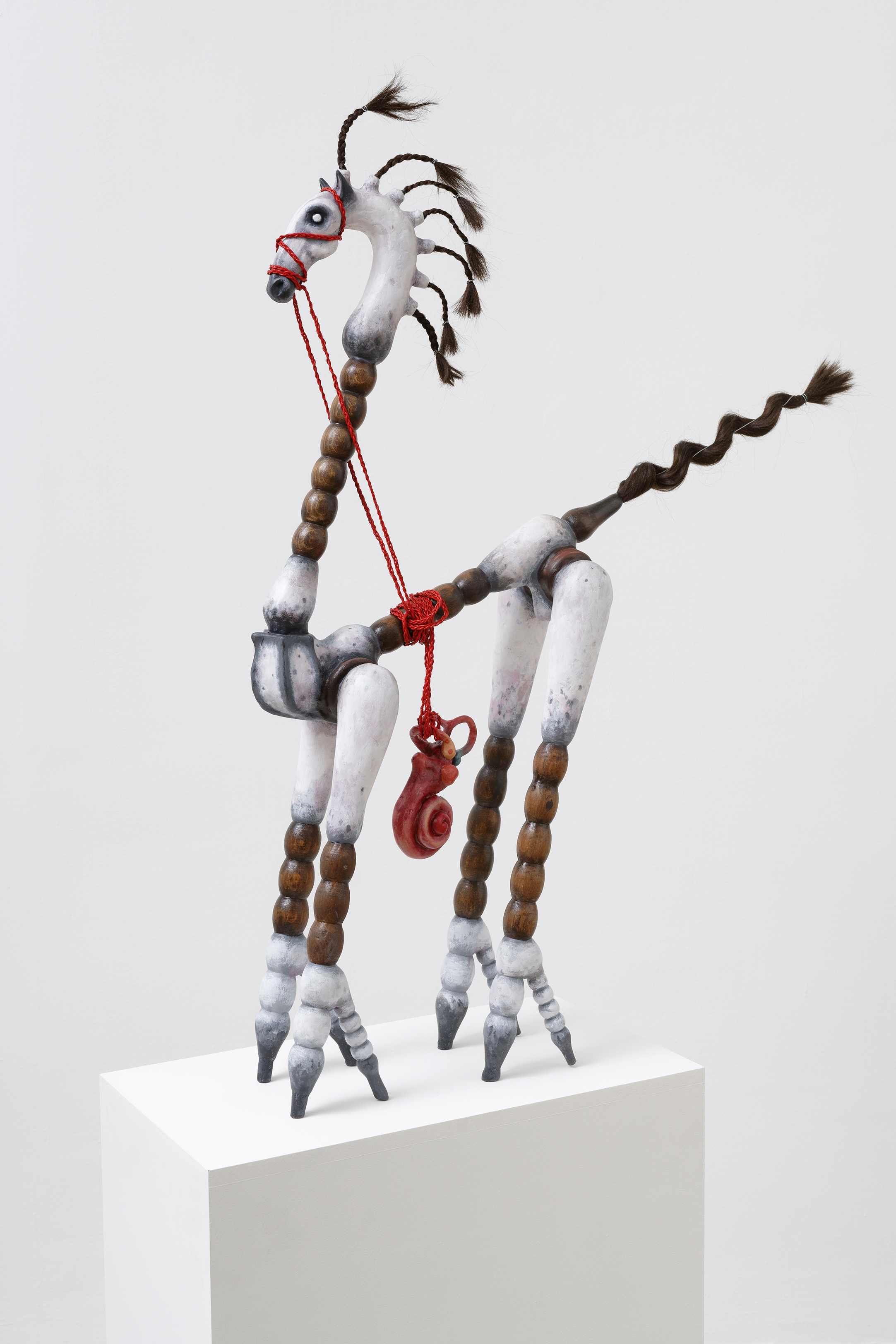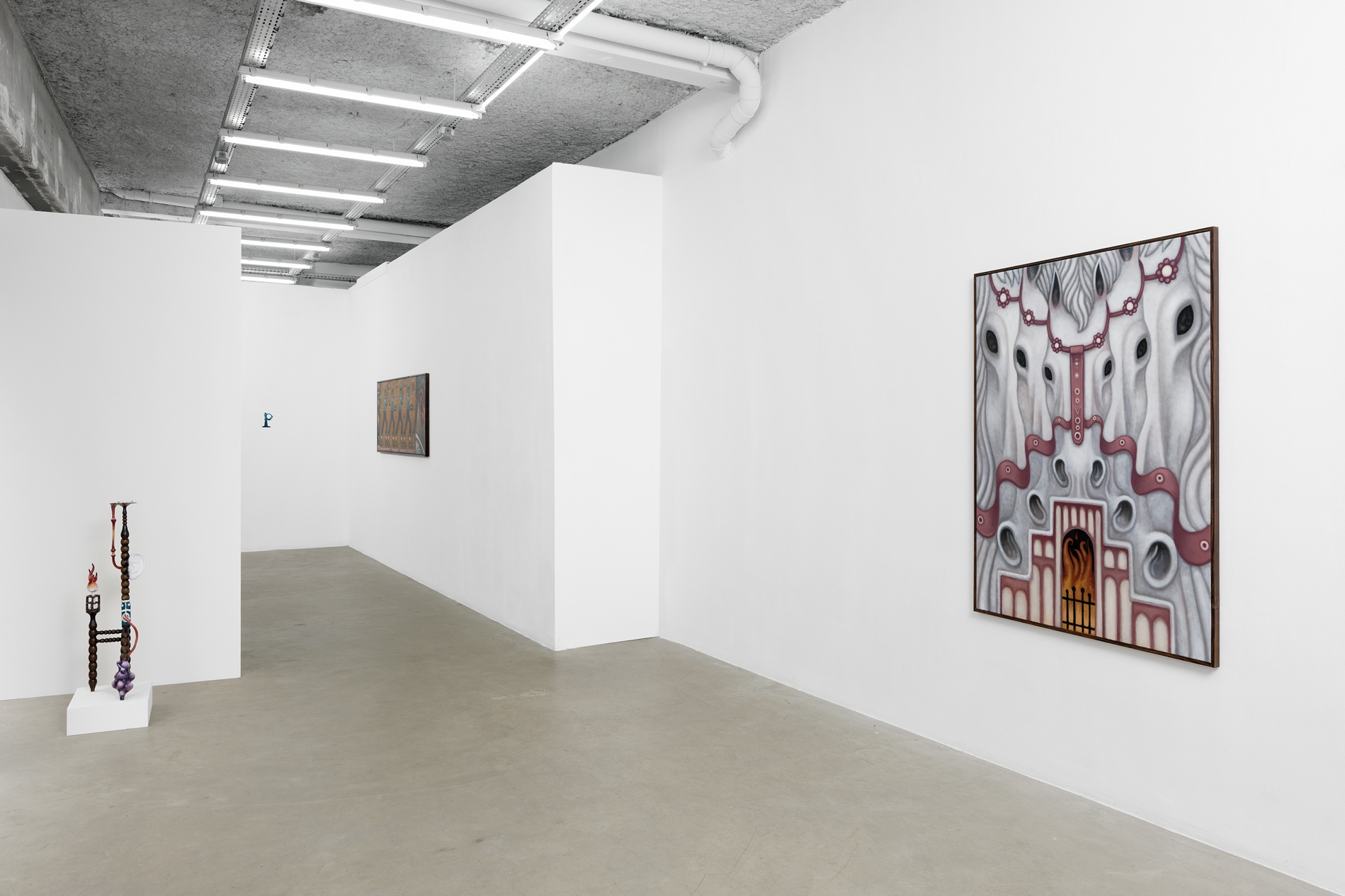Why do we consider it an insult to call somebody a whore? Do we imply that there is something degrading about being one? The word ‘prostitute’ is so firmly fossilised in our linguistic systems as “bad” that this insult, meaningless as it is, persists as a verbal defence mechanism even amongst the most progressive people. The whore, the essentially despicable woman, exists in language only because of the one who gives his name to this exhibition; the conservative divinity invented by the English poet William Blake, Urizen. Dissecting the fabric of reality with his compass, this old bearded man undertakes the enormous task of dividing the world into fixed categories. For Blake, Urizen is a malevolent figure. He wages war on the poetics generated by confusion by imposing baseless and often outdated taxonomies. Although obsolete, these taxonomies continue to impose themselves onto reality at the speed of light: like the whore, or like the zombie police officers speeding down an admonishing index finger in Justin Fitzpatrick’s painting “Seeds of Urizen (Frieze!)”.
In his second solo exhibition at the gallery, Justin Fitzpatrick’s paintings show us the persistent and delirious circulation of ‘ Urizian’ categories, as well as the feelings of shame and fear they bring forth. Laws, social networks, rumours, and tics of language are all revealed as the bearers of Urizen’s judgements: sealed, discrete entities, easily digestible and potentially deadly. These judgements, embedded in language, act like viruses. They mimetically replicate themselves from one body to another, from the individual to the group. They can infect the auditory system (“Stage Design for a Musical About Paranoia”), or a torso and its intestinal flora (“The Evolution of Anxiety”). The bodies and objects depicted by Justin Fitzpatrick are in the middle of metamorphosis. External energies are relentlessly manipulating and mortifying their flesh, and transforming the networks of their minds.
Inspired by a modern and playful range of visual references linked to the idea of production (from socialist realism to advertising) ; the artist reveals the inner workings of the performative machinery of categorisation. Although often absurd, carceral and inherently restrictive, categorisation ( as a part of creative and critical projects) can also be emancipatory. When it is excessively applied, however, or starts to be used systematically or unthinkingly, it often becomes convoluted, labyrinthine and paranoid. In an age of post-truth, mass surveillance, and the collapse of grand narratives, paranoia is no longer the preserve of unhinged people, geniuses, and addicts. We have all become paranoid, and Justin Fitzpatrick is no exception. As a gay artist, his ear is definitely attuned to judgement and labels. A cross between a circus, merry-go-round, and psychosomatic opera, this exhibition is therefore an attempt to exorcise Urizen, who, when faced with a climate of uncertainty and a crisis of trust, offers us an archaic system of order that enslaves us.
— Julie Ackermann
♡
En quoi serait-il une injure de traiter quelqu’un de pute et donc systématiquement dégradant d’en être une ? L’arrimage de la prostituée à la catégorie « du mal » s’est tellement fossilisée dans la langue que cette insulte (aussi vide et discriminante soit-elle) persiste dans les réflexes de défense verbale, même chez les plus progressistes. Cette pute, en tant que femme méprisable par essence, existe en raison de celui qui donne son nom à l’exposition, Urizen, divinité conservatrice inventée par le poète anglais William Blake. Tranchant dans la matière du réel avec son compas, Urizen, vieux mâle barbu, opère au grand partage du monde en catégories rigides. Chez Blake, il revêt un caractère maléfique. Combattant la poésie émanant de la confusion, il fixe des taxonomies parfois datées et infondées. Malgré leur obsolescence, elles continuent de s’imposer au réel à la vitesse de l’éclair, comme cette pute ou les policiers-zombies dévalant la piste du doigt inquisiteur du tableau « Seeds of Urizen ( Frieze!) » de Justin Fitzpatrick.
Pour sa seconde exposition personnelle à la galerie, Justin Fitzpatrick met en scène la persistance et la circulation délirante des catégories « uriziennes » et des sentiments de honte et de peur qui en découlent. On le comprend vite : lois, réseaux sociaux, rumeurs, ou encore tics de langage sont les messagers des jugements d’Urizen, entités scellées, facilement digestibles et potentiellement mortifères. Elles apparaissent comme autant de virus qui se dupliquent par mimétisme d’un corps à un autre, d'un individu à un groupe. Ils infectent ainsi un système auditif (« Stage design for a Musical about paranoïa »), un torse et sa fleur intestinale (« The Evolution of Anxiety »). Les corps et les objets représentés par Justin Fitzpatrick sont en pleine métamorphose : des énergies pétrissent et sclérosent sans relâche leur chair et les dédales de leur esprit.
Inspiré par une iconographie moderne, productiviste et ludique (du réalisme socialiste à la publicité), l’artiste révèle les rouages de la machinerie performative (tantôt absurde, carcérale mais aussi émancipatrice) de la catégorisation. Cette dernière soutient le projet créateur et critique mais lorsqu’elle est excessive, mimétique et systémique, elle peut prendre des allures labyrinthiques, hallucinatoires et se muter en paranoïa. Avec la surveillance de masse, la post-vérité et l’effondrement des grands récits, la paranoïa n’est en effet plus l’apanage du fou, du génie ou de l’addict. Nous sommes tous paranos et Justin Fitzpatrick n’y échappe pas. Artiste gay, il confie être vulnérable au jugement et aux processus de labellisation. Cirque, manège ou opéra psychosomatique, son exposition s’apparente alors à une tentative d’exorcisation d’Urizen, cette épidémie renouvelant l’asservissement à des ordres archaïques et lénifiants dans un climat de perte de repères et de crise de la confiance.
Julie Ackermann

